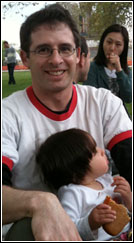“American View” interview with JETwit publisher Steven Horowitz on JET involvement in Japan’s recovery efforts
Update 03.13.12: Realized I neglected to mention in the interview The MUD Project, an ongoing Tohoku relief effort organized by JET alum Colin Rennie (CIR Yamagata-ken, 2007-10).
Update 03.12.12: Here’s the interview translated into Japanese
“American View,” a quarterly magazine published by the Press Office of the U.S. Embassy in Tokyo, recently interviewed JETwit publisher Steven Horowitz (Aichi-ken, 1992-94) about the role of JETs and JET alumni in connection with Japan’s recovery efforts following the 3/11 disaster.
American JETs Rally for Japan in Myriad Ways
http://amview.japan.usembassy.gov/en/jet-alumni/
American View: What is unique about disaster relief activities by JET program participants and alumni?
Steven Horowitz: The connection we have to the affected areas and to each other. And the language skills and ability to communicate directly with people in the communities. When you work for the school system, you really get connected to the community. You understand how things work, how kids evolve into adults. You’re part of the community. As a result, JETs are able to identify needs and then reach out to a global community to help fill them in unique ways. I think JETs and JET alumni in some ways were better able to identify needs on the ground than some of the larger, more removed relief organizations, and especially with regard to education-related needs.
問 現役・元JET参加者による復興支援活動にはどのような特徴がありますか。
答 被災地との絆やJET参加者同志のつながり、そして地元の人たちと直接意思を疎通できる日本語能力があります。学校制度の中で働けば地域社会と真のつながりができます。物事の仕組みや子どもが大人になっていく過程を理解するようになります。地域社会の一員となるのです。ですからJET参加者たちは、地域のニーズを見極めた上で国際社会に働きかけ、独自のやり方でそうしたニーズを満たす支援ができます。現場から遠く離れた大規模な支援団体よりも現役・元JET参加者たちの方が、いろいろな点で現場のニーズ、特に教育関係のニーズに関してより確実に把握できると思います。
*CLICK HERE to read the full interview in English
*CLICK HERE for the Japanese version




Comments are closed.